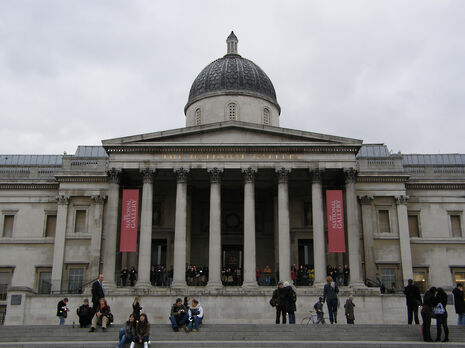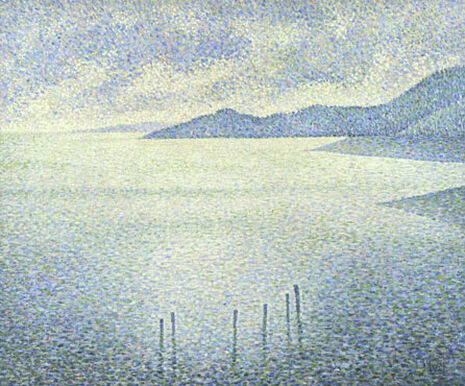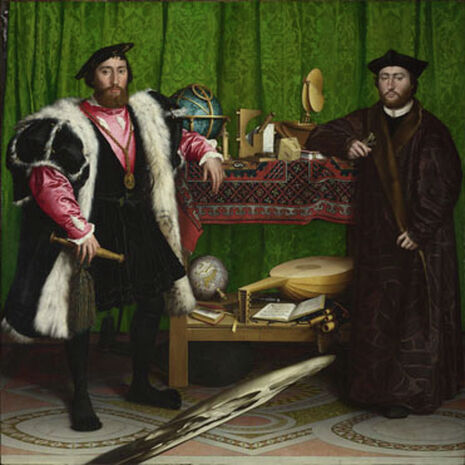Soundscapes: creative or crass?
In the wake of the National Gallery’s controversial exhibition, Chloe Slattery asks if attempts to attract new art enthusiasts are just misguided gimmicks

The recent exhibition ‘Soundscapes’ at the National Gallery has created varied responses - while for some the experience of superimposing sound onto paintings produces an “extraordinary aesthetic experience”, for others this is just another attempt from an age-old institution to get down with the kids. A little bit like an embarrassing mum who thinks posting photos of dinner on Instagram will get her more followers.
From Turner prize-winner sound artist Susan Philipsz to music producer Jamie XX, the National Gallery has asked six composers to create an audio work to be played along a painting they’ve selected from the collection. While this reads as an effort to encourage the visitor to ‘hear’ the painting or ‘view’ the sound, it seems unlikely that superimposing one artwork onto another will achieve this desired effect.
The fact that museums are developing new ways of making the visitor’s experience more interactive, for example by encouraging visitors to Instagram and hashtag the show, feels slightly patronising to our generation. It is as if they do not have faith that generation Y’s’ need for constant stimulation will be satisfied in a museum with ‘just’ paintings hanging on its walls. That we need something which will convince us to linger just a few minutes longer rather than our usual swipe from one image to another. Worse even, that the clueless spectator must be guided through sound in order to ‘properly’ understand the meaning of the artwork.

Even if some were to agree that pairing up Jamie XX’s light dance beats to Théo van Rysselberghe’s Coastal Scene illuminates the pointillist seascape “implying a space beyond the sea”, wouldn’t it be nice for the spectators to come up with this conclusion themselves? It seems to me that the whole point of art is to leave the piece subject to interpretation. At the risk of sounding corny I would say that when it comes to art there is no right or wrong answer. And while there may be some value when it comes to seeing Rysselberghe’s scene through the lens of Jamie XX, this negates the whole imaginative experience one enters when looking at a painting.

This isn’t to say that the exhibition didn’t have any merit at all - seeing a composer’s take on a painting can be interesting if that response has artistic value of its own. For example, Susan Philipsz’s composition of three sustained notes played repeatedly on a violin brought contrast to the grandeur of Holbein’s Ambassadors creating something interesting and unexpected. Rather than pointing towards the obvious, her piece highlighted the vulnerability of the characters and the overall tense mood. Maybe her composition worked best because she is actually an artist who is used to writing compositions meant to be listened to in a gallery. What I found problematic however was the predictiveness of other pieces. For example, Gabriel Yared’s response to Cézanne’s Les Grandes Baigneuses consisted of a piece of classical music, a painful reminder of bad art documentaries where each shot of a painting is accompanied by faint sounds of clarinet. Other compositions, like Chris Watson’s response to Gallen-Kallela’s Lake Keitele, felt far too literal in its attempt to recreate the outdoor atmosphere through birdsongs and other wildlife sounds.
It isn’t that I think that sound and art cannot collaborate - quite on the contrary both mediums can really complement each other like in the case of Gerhard Richter And Avro Pärt’s moving temporal installation which premiered at this year’s Manchester International Festival. In this partnership, Richter’s series Birkenau (2015) and Double Grey (2014) are presented with Pärt’s composition Drei Hirtenkinder aus Fátima. Here, the repetition of the painter’s monochromatic variations parallels the repetition of the live choir’s song questioning the differences between what we hear and what we see. What distinguishes their piece from Soundscapes is the reciprocity of their collaboration. By meeting one another, both men made works inspired by and dedicated to the other. While on the other hand Soundscapes lacks the consent of the painter - whose work was never meant to be presented in this context. In this one-way collaboration the curator and sound artist impose a view of the painting which is not the one the painter had in mind. Instead of trying to make the museum experience more entertaining through this gimmicky installation, maybe the National Gallery should just let the paintings speak for themselves.
 News / SU stops offering student discounts8 January 2026
News / SU stops offering student discounts8 January 2026 Comment / Plastic pubs: the problem with Cambridge alehouses 5 January 2026
Comment / Plastic pubs: the problem with Cambridge alehouses 5 January 2026 Theatre / Camdram publicity needs aquickcamfab11 January 2026
Theatre / Camdram publicity needs aquickcamfab11 January 2026 News / Cambridge academic condemns US operation against Maduro as ‘clearly internationally unlawful’10 January 2026
News / Cambridge academic condemns US operation against Maduro as ‘clearly internationally unlawful’10 January 2026 Comment / What happened to men at Cambridge?31 December 2025
Comment / What happened to men at Cambridge?31 December 2025








